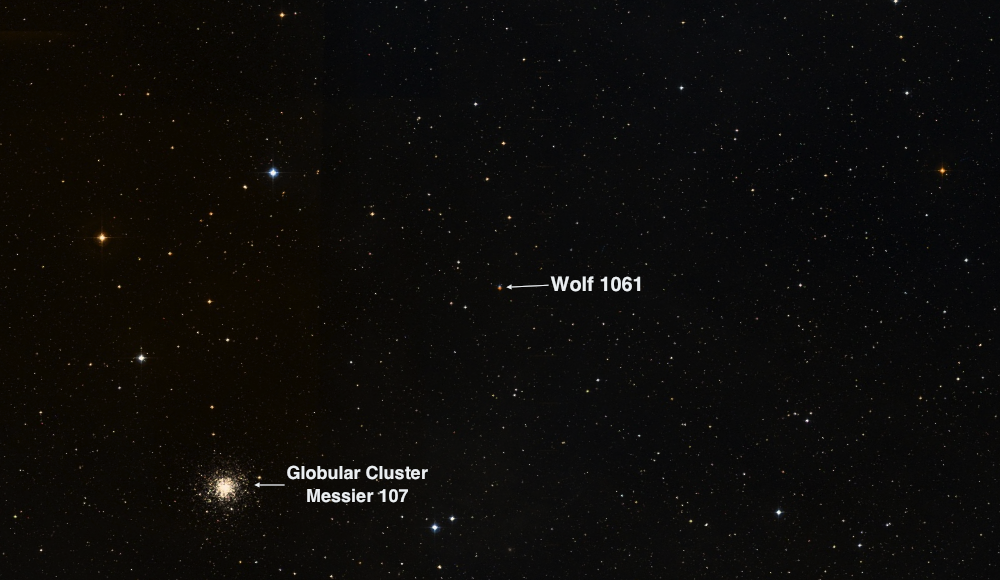Potentially habitable planet discovered only 14 light years
Hi, neighbor!

UNSW Australia astronomers discovered the planet Wolf 1061c, which is located in the so-called habitability zone - an area where the calculated conditions on the planet's surface are close to earth and allow liquid water to exist. Planets in the habitable zone are favorable for the emergence of life that is not earthly.
So, the planet Wolf 1061c in the red dwarf system Wolf 1061 is the closest planet of this type to us in the entire known Universe. The star system is only 14 light years from Earth.
Wolf 1061c is four times heavier than Earth, the second of three planets in the star system. “This is a particularly interesting find, because all three planets have a fairly small mass, so they can potentially have a solid surface, and the middle one is in the area where liquid water, and maybe life, is possible,” said the lead author of the study Dr. Duncan Wright.
“It's so charming to look at the vast expanses of space and think that there is a star very close to us - practically, our neighbor - who may have an inhabited planet.”
So far, several planets have been discovered closer to us than the Wolf 1061c, but none of them are in the habitable zone.
Three open planets are in the orbit of a small, relatively cold star, and make a revolution around it for 5, 18 and 67 days, respectively. The masses of the planets are 1.4, 4.3 and 5.2 from the earth, respectively.
The farthest planet out of the way falls out of the habitable zone, and the first planet is too close to the star to be inhabited.
The article will be published in The Astrophysical Journal Letters. Preprint in pdf .

Astronomers made the discovery by processing data from a HARPS spectrograph installed at the European Southern Observatory using a 3.6-meter telescope in Chile.
“Our team has developed a new technique that improves the analysis of data from this precision tool specifically designed to search for planets, and we examined data from more than ten years of Wolf 1061 observations,” said Professor Chris Tinney, Exoplanetary Science's Team Leader UNSW University.
These three planets right next to us will replenish a growing group of solid planets in the orbits of stars colder than our Sun.
Small solid planets like the Earth are quite common in our galaxy, and star systems with several planets are also not uncommon. Unfortunately, most of the found terrestrial planets are in hundreds and thousands of light years. The only exception to this day was the Gliese 667Cc, 22 light-years from Earth. It is also in the orbit of the red dwarf, has a circulation period of 28 days and a mass of 4.5 from Earth.
And now we have found a suitable planet even closer than Gliese 667Cc.
“The short distance to Wolf 1061 gives a good chance that these planets will pass in front of the star. If this happens, it may be possible to study the atmospheres of these planets and see if they are favorable for life, ”explained one of the co-authors of the study, Dr. Rob Wittenmyer.
